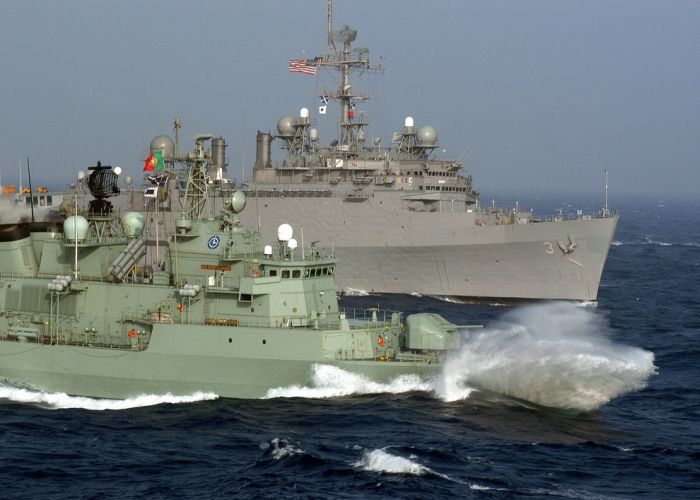|
|
The United States Navy
|
Following an undeclared Quasi-War with France, the U.S. Navy saw substantial action in the War of 1812, where it was victorious in numerous single-ship duels with the Royal Navy. The Navy drove all significant British forces off of Lake Erie and Lake Champlain and prevented them from becoming British controlled zones of conflict. Despite this, the U.S. Navy was unable to prevent the British from blockading American ports and landing troops on American soil. After the war, the U.S. Navy again focused its attention on protecting American shipping assets, sending squadrons to the Caribbean, the Mediterranean, South America, Africa, and the Pacific.
During the Mexican-American War the U.S. Navy contributed by instituting blockades of Mexican ports, capturing or burning the Mexican fleet in the Gulf of California and capturing all major cities in Baja California peninsula—later returned. In 1846-1848 the navy successfully used the Pacific Squadron under Commodore (Rear Admiral) Robert Stockton and its marines and blue-jackets to facilitate the capture of California with large scale land operations coordinated with the local militia organized in the California Battalion. The navy conducted the U.S. military's first large-scale amphibious joint operation by successfully landing 12,000 army troops with their equipment in one day at Veracruz, Mexico. When larger guns were needed to bombard Veracruz Navy volunteers landed large navy guns and manned them in the successful bombardment of the city and its surrender. This successful landing and capture of Veracruz eventually opening the way for the capture of Mexico City and the end of the war. The United States Navy established itself as a player in American foreign policy through the actions of Commodore Matthew Perry in Japan, which resulted in the Convention of Kanagawa in 1854.
Naval power would play a significant role during the American Civil War, where the Union had a distinct advantage over the Confederacy on the seas. A Union blockade on shipping handicapped the Southern effort throughout the conflict. The two American navies would help usher in a new era in world naval history by putting ironclad warships into combat for the first time. The Battle of Hampton Roads in 1862, which pitted USS Monitor against CSS Virginia, became the first engagement between two steam-powered ironclads. Soon after the war, however, the U.S. Navy's fleet slipped into obsolescence because of neglect.
|
|









